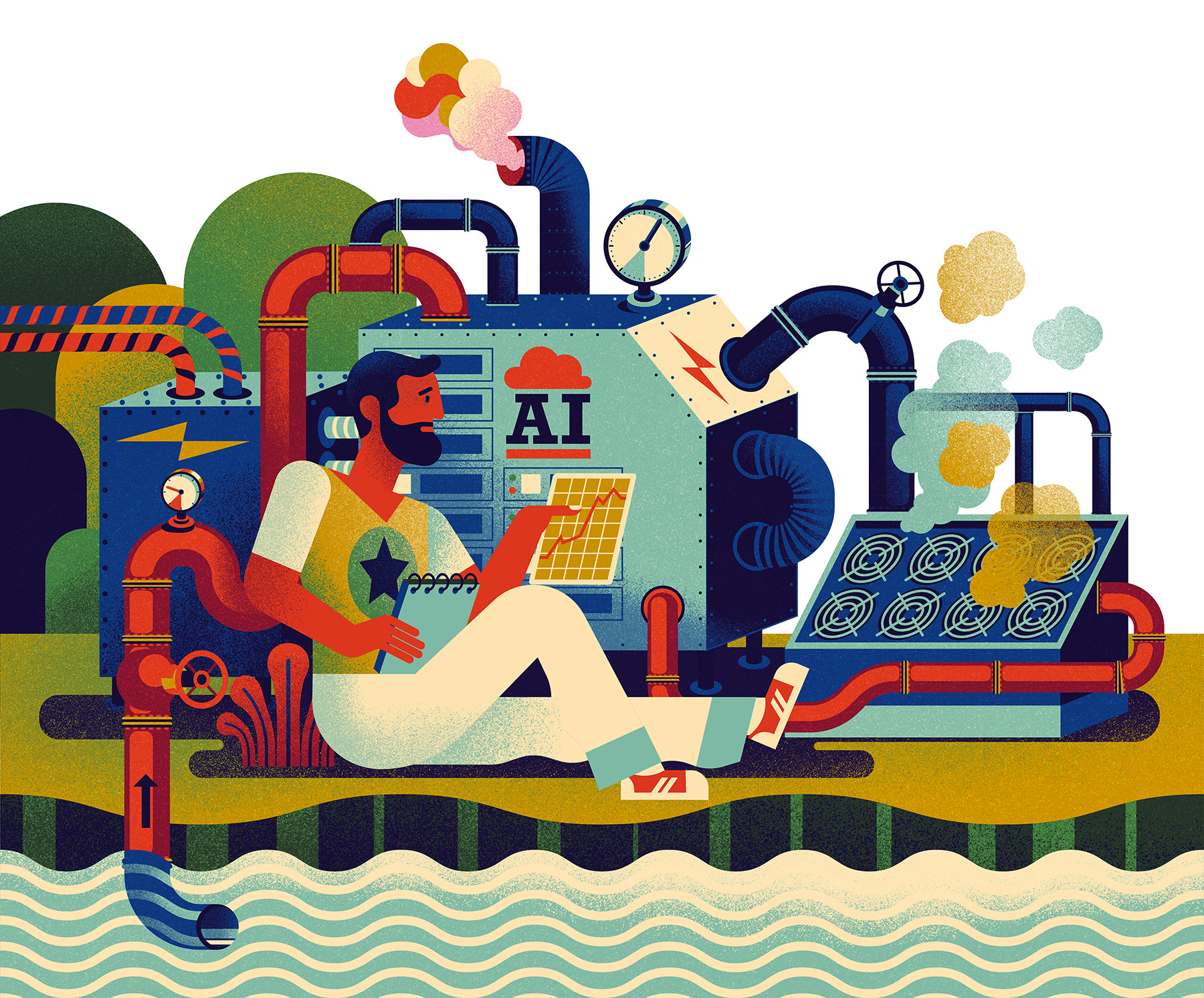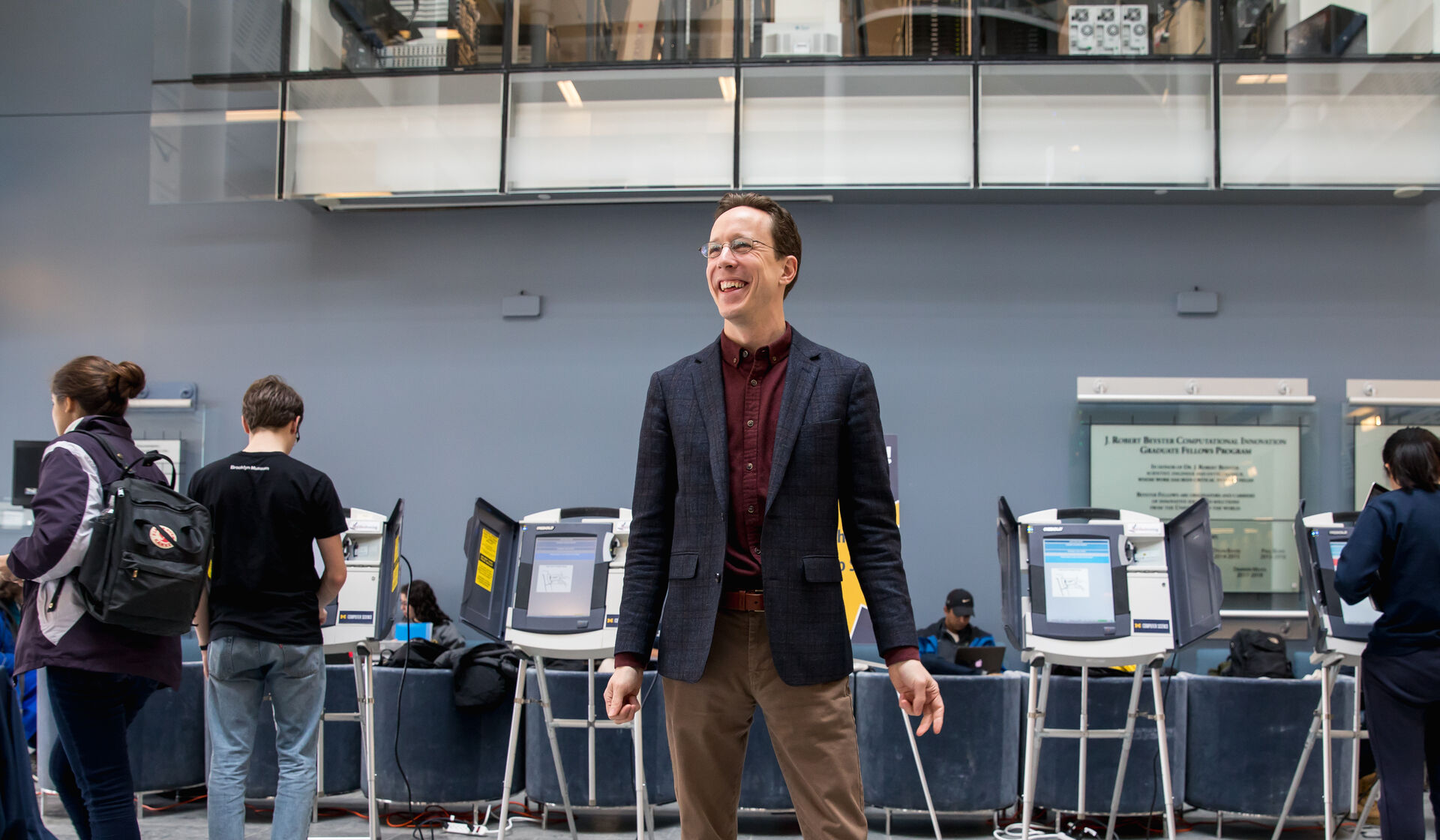Artificial Intelligence’s Energy Demands
•
Illustration by gwen keraval
The University of Michigan was the first university to offer custom artificial intelligence (AI) tools to its community of professors, researchers, and students. The suite of AI tools include Go Blue, an AI assistant that can help navigate campus life and the many documents, policies, and events that accompany it; free access to premier large language models like GPT-4o, DALL-E3, and Claude through U-M GPT; and U-M Maizy, custom and private AI research tools for data analysis.
But generative AI systems are immensely energy and water intensive, which is usually used to keep the data centers cool. According to an investigation done by The Washington Post, a 100-word email generated by GPT-4 requires more than one bottle of water. By some estimates, AI will use 20 percent of the global electricity supply by 2030. And the energy to run and keep data centers cool could reach the equivalent of Japan’s total energy consumption by 2026.
In July, Google showed its carbon emissions footprint rose by 48 percent due to AI and it is also falling way behind on its 2030 water replenishing goal.
“There’s a tension in terms of trying to meet our U-M sustainability goals and decarbonization goals while still pushing out this technology,” says Rabab Haider, an assistant professor in the civil and environmental engineering department. “We need to be conscious of the way that we use these tools and technologies, not just for data privacy, but also for sustainability.”
Student Investment
A new student group on campus, the Students for Sustainable Artificial Intelligence Development (SSAID), is raising awareness about the environmental impact of AI and bringing transparency directly into the classroom. The group hosted a panel session in December and created a syllabus brief on the AI environmental impact that will be rolled out in syllabi at the School of Literature, Science and the Arts in the fall. The group is pushing for these disclaimers to be on all U-M syllabi in the future.
“We’re not asking students not to use AI,” says Stephanie Smith, president of SSAID. “But we want students and staff and the greater U-M community to understand what the environmental impact is and to use it consciously, because it’s not a tool that we need to be using all the time.”
The group is already working with the Student Carbon Neutrality Network, on revising the University’s scope three emissions goals to make sure that it includes AI. And the group is creating statewide policy briefs on data centers for all of Michigan as the industry starts moving in.
“We’re not asking students not to use AI. But we want students and staff and the greater U-M community to understand what the environmental impact is and to use it consciously, because it’s not a tool that we need to be using all the time.”
— Stephanie Smith, president of SSAID
Last year, the Michigan Senate approved a tax incentive to boost the state’s data center industry. The demand for these centers are driven by AI and the University community will get access to cutting-edge AI tools that could drive research on campus. The data centers will also provide job opportunities in the wider community. But they also bring massive new energy demands to the grid. The policy briefs will help community members advocate for their best interests and stay informed.
“What do communities need to know about the impact of these data centers?” Smith says. “So the community can go to township meetings armed with information.”
According to Haider, the average age of Michigan’s water infrastructure is 75 years old. And the electric grid isn’t very reliable either.
“You will have a lot of additional risks that come in from higher energy and water usage that will come from the increased demand driven by data centers,” she says.
According to her, Michigan residents might see power outages that last for days. And climate activists are concerned about protecting the state’s water ecosystems. Smith has made water conservation the face of AI her project and is looking into ways to protect Michigan’s freshwater resources and innovative solutions like using the resulting heated water from data center cooling as thermal energy sources.
“We can’t afford to just degrade our freshwater like that,” she says.
Prompting Solutions
There are other efforts on campus to start creating more sustainable AI solutions. The Machine Learning Energy Initiative was started by Mosharaf Chowdhury, associate professor of computer science energy, and now involves 13 faculty on campus and more across six other universities including MIT, Columbia University, and the University of Washington.
The group is focusing on building better, more sustainable software, understanding data center supply chains, influencing policy and encouraging research. Chowdhury has found that slowing down the AI when speed isn’t vital can reduce energy loads. And his student, Jae-won Chung, MS’23, a fourth-year Ph.D. candidate, found that right-sizing the speed of larger and smaller GPUs can reduce energy loads by up to 30 percent.

The initiative also hosts the website ML.Energy Leaderboard, which ranks AI models by their energy use per output, aiming to raise awareness and guide more sustainable decision-making for users.
Ravi Pendse, U-M’s vice president of information technology and chief information officer, says the University’s commitment to sustainability is important in its technological innovation.
“At the University of Michigan, we believe that innovation and sustainability must go hand in hand,” Pendse says. “As we expand the frontiers of artificial intelligence, we are equally committed to reducing its environmental impact and ensuring these technologies are developed responsibly. Our goal is to empower the next generation to build a future where technological advancement uplifts humanity and protects our planet.”
Jesse Klein, ’15, is a freelance writer based in California.



